by Uma Nagendra
It's a big move, turning on the heater. I can ignore the chilly mornings and shrinking daylight for a while, but once the heater is on, I'm no longer in denial that winter is just a calendar page away. For people and creatures alike, winter is a notoriously harsh season. Everyone has to prepare in some way: while we're breaking out the boxes of sweaters and scarves from the attic, squirrels are gorging themselves on acorns, geese are flying south, and bears are settling down for a long, sleepy hibernation. But the most notorious display of winter preparation comes from deciduous trees: the crimson, gold, and maroon bouquet that we call fall colors.
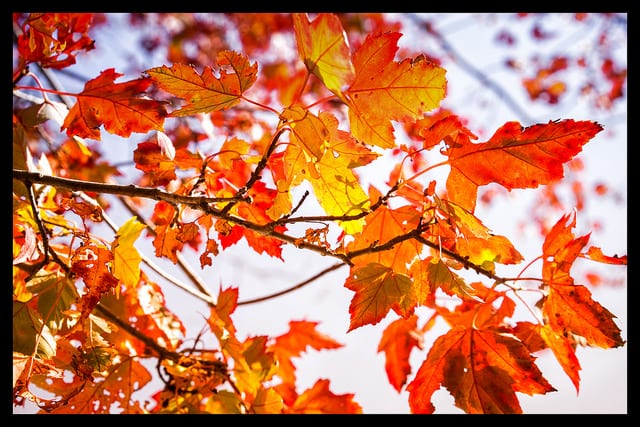
Leaves don't just fall by accident: the whole process of trees turning bright colors and then shedding their leaves is a highly regulated step-by-step system initiated by the tree itself. But compared to hibernating or stocking up supplies for winter, dropping leaves appears to be a counter-intuitive strategy for trees to prepare for harsh conditions. The vibrant falling leaves are the tree's personal factories, vital for energy production. When a tree drops its leaves, it is essentially yanking out its lungs, saying “meh, I don't need this right now,†and dropping it on the ground. How is this a good way to prepare for winter?
Even though it seems wasteful, shedding leaves is actually an economical strategy for conserving valuable materials. As days get shorter and the temperature drops, the decreasing sunlight makes it more and more difficult for leaves to capture energy from the sun. At some point, the cost of trees maintaining their leaves outweighs the benefit they gain from them. Leaves are essentially factories that need to be constantly maintained, but just aren't producing anymore. At that point, it's time to let them go. Specially-designated “scissor cells†at the leaf-twig intersection start dying, weakening the seam until the leaf can't hold its own weight.
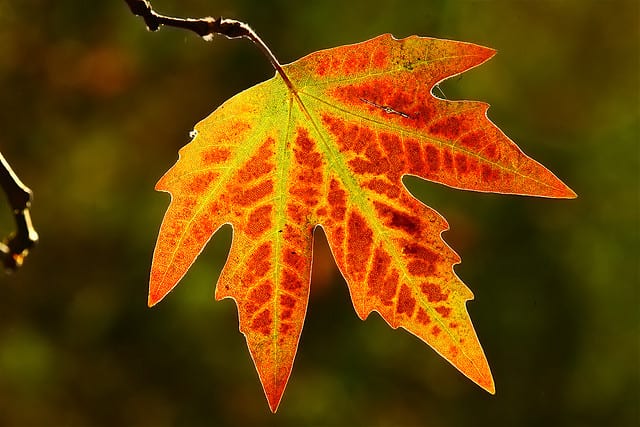
Before the leaves fall, however, the tree basically strips each one of its internal machines. After investing resources into leaf production throughout spring and summer, trees don't simply discard them—there is direct and deliberate dismantling of the expensive machinery inside. These molecular machines (chloroplasts) are full of important nutrients like nitrogen and phosphorous. Each component is scrapped for its molecular parts and moved into the stem to be stored during winter. If trees can retain as much of these nutrients as possible, they'll be better off in the future. Once spring rolls around and the conditions are more favorable, the tree will need to build more leaves again—the materials salvaged from this year's leaves are the startup fund for next year's construction.
The beautiful color we see is partly a byproduct of this recycling process, and partly a testament to just how good trees are at repurposing materials. Many of these expensive molecular machines within the leaves are the very ones that create green color (chlorophylls). As they are dismantled and carted away, the orange and yellow pigments beneath them (carotinoids and xanthophylls) are suddenly visible.
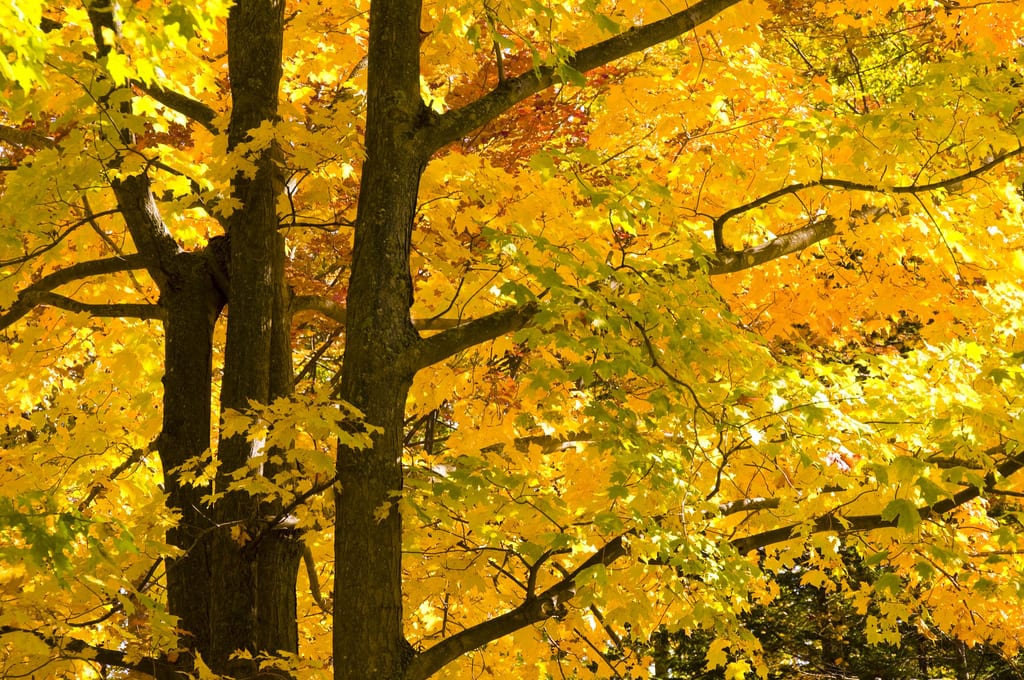
These orange and yellow pigments exist in the leaf year-round, protecting the greens from excess sunlight. When sunlight comes in faster than the leaf can process, the extra energy can disable the molecular machinery. Even though the leaf is in the process of closing down in autumn, the expensive machinery still needs to get safely into storage without sun damage—they are in fact even more vulnerable when it's cold out. During autumn, the orange and yellow pigments hang on, continuing to protect the nutrient-rich chlorophylls from sun-damage while they're being packed away. And we get to marvel at the golden yellow leaves.
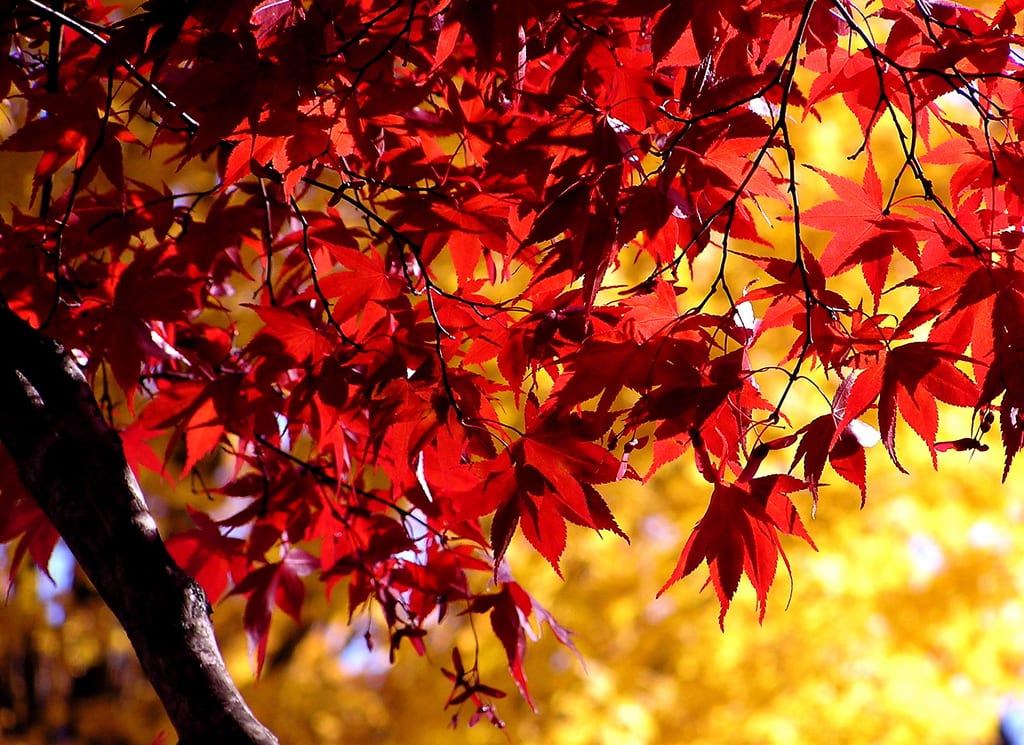
Leaves always have yellows and oranges, hiding beneath the green. Reds, however, are deliberately manufactured by some trees in autumn for an extra level of security—especially those trees that normally grow in cold regions, or where nitrogen is particularly scarce. These reds (anthocyanins) are the same pigments that make roses red and violets blue—but they are far more than decoration. Reds act as a “sunscreen†for the leaf by absorbing excess blue-green and ultraviolet light before it can damage chlorophylls. Reds are so proficient at shielding vulnerable leaf machinery that the tree actively invests in their production at a time when everything else is shutting down. Depending on the particular anthocyanins the tree produces, we'll see them displayed as crimson, burgundy, maroon, or even deep purple.
With the help of these pigments, a tree can recycle about half of the nutrients from its leaves. Compare that to the mere third of all trash that Americans recycle, and it's clear that trees are experts at efficiency. In the spring, these savings will go towards the first new leaves. For now, all that nitrogen and phosphorous is safely stored inside the twigs, instead of decomposing on the forest floor. It's time to hunker down and start saving energy, because winter is coming.
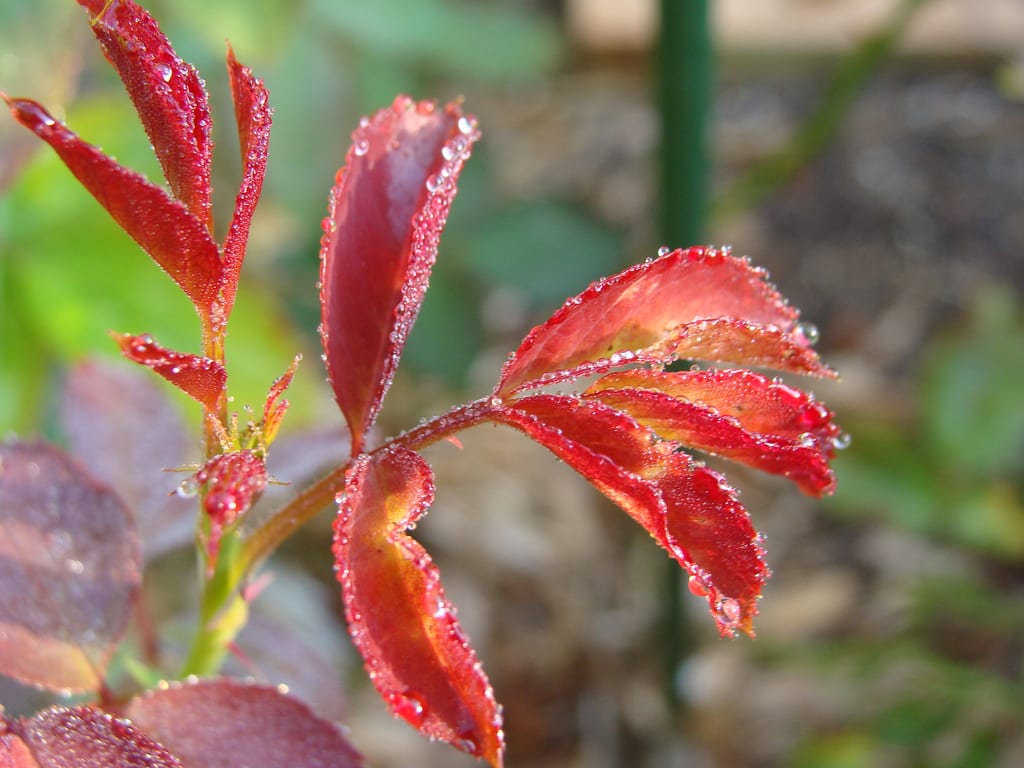
 |
Uma Nagendra is a PhD Candidate at the University of Georgia studying how tornadoes change the way trees interact with the soil. When she's not crawling over fallen trees in North Georgia, Uma enjoys aerial circus arts, playing the mandolin, and convincing other people to dance. She can be reached at uma.nagendra@gmail.com or followed on Twitter @atinytornado. More from Uma Nagendra. |
About the Author
-
athenssciencecafehttps://athensscienceobserver.com/author/athenssciencecafe/April 17, 2020
-
athenssciencecafehttps://athensscienceobserver.com/author/athenssciencecafe/April 12, 2020
-
athenssciencecafehttps://athensscienceobserver.com/author/athenssciencecafe/April 3, 2020
-
athenssciencecafehttps://athensscienceobserver.com/author/athenssciencecafe/March 30, 2020







